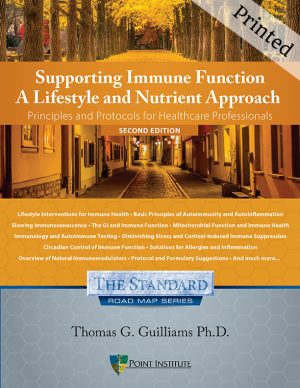Description
An Updated, Revised and Greatly Expanded Second Edition of our First Road map!
The use of dietary supplements continues to grow and is a fundamental health-promoting strategy to bridge the gap between a person’s nutritional needs and their actual dietary intake. In addition, thousands of forward-thinking healthcare professionals routinely recommend dietary supplements to optimize their patient’s nutrient status. However, clinicians and patients are routinely faced with an onslaught of confusing, contradictory, over-hyped and often misleading information about nutrition, especially dietary supplementation, preventing both from fully leveraging the potential of dietary supplementation. Unfortunately, many nutritional guideline recommendations and references are decades old and out-of-sync with the latest nutritional research; and most lack the practical and clinically-relevant relationship linking the evidence-based science of nutrition with the actual ingredients and products available to consumers in the real world. Supplementing Dietary Nutrients—A Guide for Healthcare Professionals bridges this gap.
Designed to help answer the real-world questions about supplementing dietary nutrients within the clinical practice, this guide contains both fundamental principles of nutrient use as well as detailed monographs on over 30 micronutrients. All of this, with an insider’s look into the supplement industry; revealing the ingredient sources, manufacturing processes, regulatory quirks and marketing controversies that create confusion and limit clinical outcomes.
This second edition includes a vast expansion of our earlier work, especially as it relates to the nutrient monographs, which have been expanded from 66 pages to 188 pages! This allowed us to create a one-page summary template for each nutrient, followed by an expansion of each clinically-relevant component (i.e., vulnerabilities to depletion, laboratory testing for nutrient status, different supplement forms, etc.). In addition, we have added new content such as a chapter on prenatal supplementation and a section on supplementing antioxidants; as well as an expansion and rearrangement of many of the other sections from the first edition. In many ways this is a brand-new textbook.





